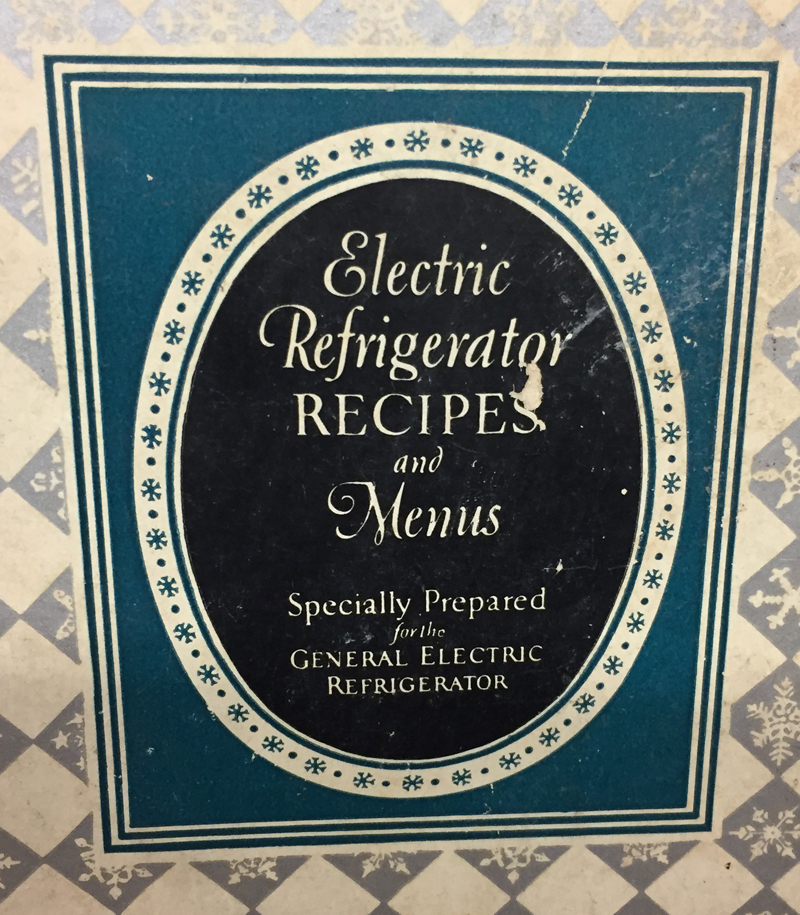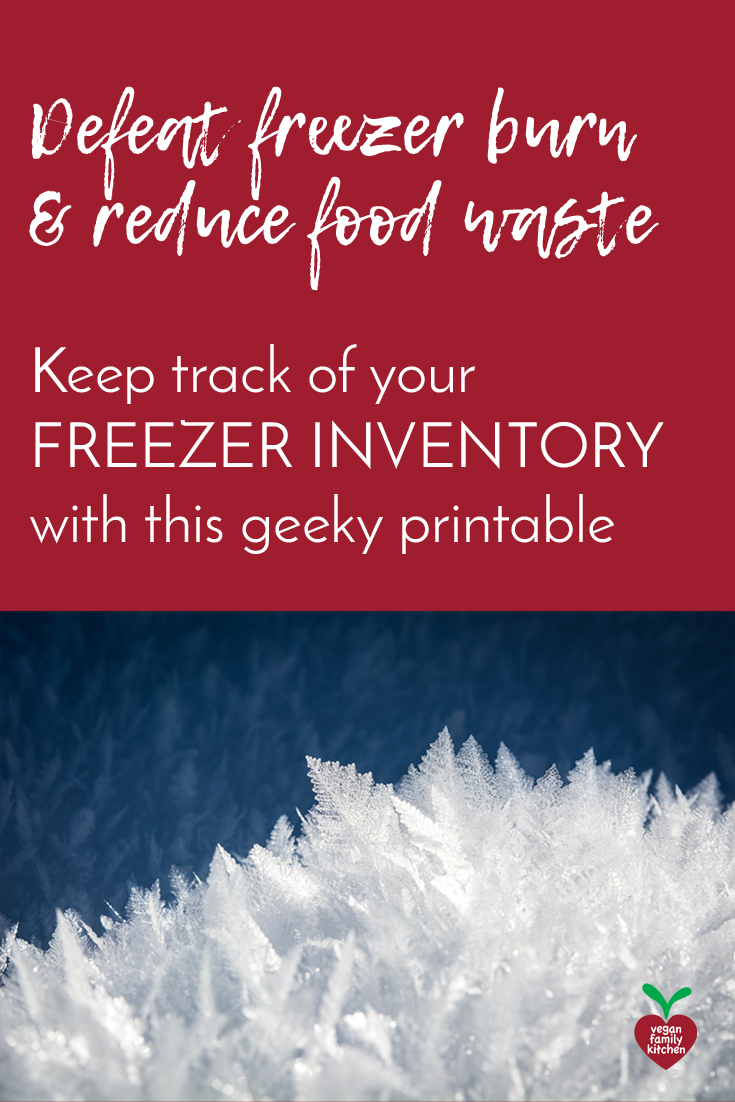For vegans and plant-based eaters leading busy lives (and who doesn’t!), advance prep sessions and batch cooking are powerful tools that reduce kitchen stress and increase the enjoyment, taste, and quality of every meal. However, successfully applying those two techniques requires mastering a critical kitchen appliance: the freezer. Sadly, freezer “technology” (if we can even call it that) is quite basic: most freezers aren’t designed to make it easy to find what we’re looking for. It’s cold in there. When we open the door we just want to throw stuff in and shut it tight again! They are also most energy efficient – and less likely to let your food spoil out in a power outage – when they are nearly full. The bottom line is that, too often, the freezer is a cold dark place where amazing meals and necessary nutrients go to die. Truth be told, the best way to prevent freezer burn is to eat the food that’s in there.

At a used bookstore, I found this cookbook, published 1927, for a what was then a brand-new appliance: the refrigerator!
Jars of arugula pesto that captured the first glorious spring harvest turn to lumpy brown mush in a recessed corner. Baked goods in an improperly sealed ziploc bag grow ice crystals. And that Smoky 2-Bean Sweet Potato Chili you so enjoyed the first time and looked forward to having again? Can’t find it.
Keeping an updated freezer inventory is essential to know what’s hiding in there, so that you can easily integrate the fruit of past weeks’ cooking labor into this week’s meal plan.
The trick is to jot down everything that goes into the freezer, the minute it goes in. You can use any scrap of paper, or download the super geeky Freezer Inventory template. Print out a few copies and keep on your fridge.
When food goes IN the freezer, write down:
- the date (I suggest using YYYY/MM/DD but do what works for you, as long as it’s always the same);
- a short description of the dish (enough to remind you of what it is and of the ingredients, if special diets are a concern);
- how many containers you are saving (by crossing out the tick-circles you don’t need).
When food comes OUT of the freezer, do not forget to:
- Tick out the appropriate circle;
- Cross out the entire line if an item has been completely consumed, so you don’t mistakenly schedule it on your meal plan.
Freezer maintenance
Every three or four months, it’s a good idea to put on gloves and pull everything out, to freshen up your inventory. I happened to do it yesterday – it took me only fifteen minutes. I am not particularly careful when putting everything back in, because my visual memory of where-I-put-what gets refreshed regularly. When planning meals, I just make sure to first schedule the food that has been in the freezer the longest to keep a healthy rotation.
Remember, the freezer will help you preserve the longevity of your food’s taste and nutrients but: 1) not forever and 2) not without impacting the food’s appearance and texture. Reap all the benefits of your advance prep sessions and protect the investment you made when cooking those double and triple batches! Just eat the food within two or three months as much as possible, sooner if you can.




